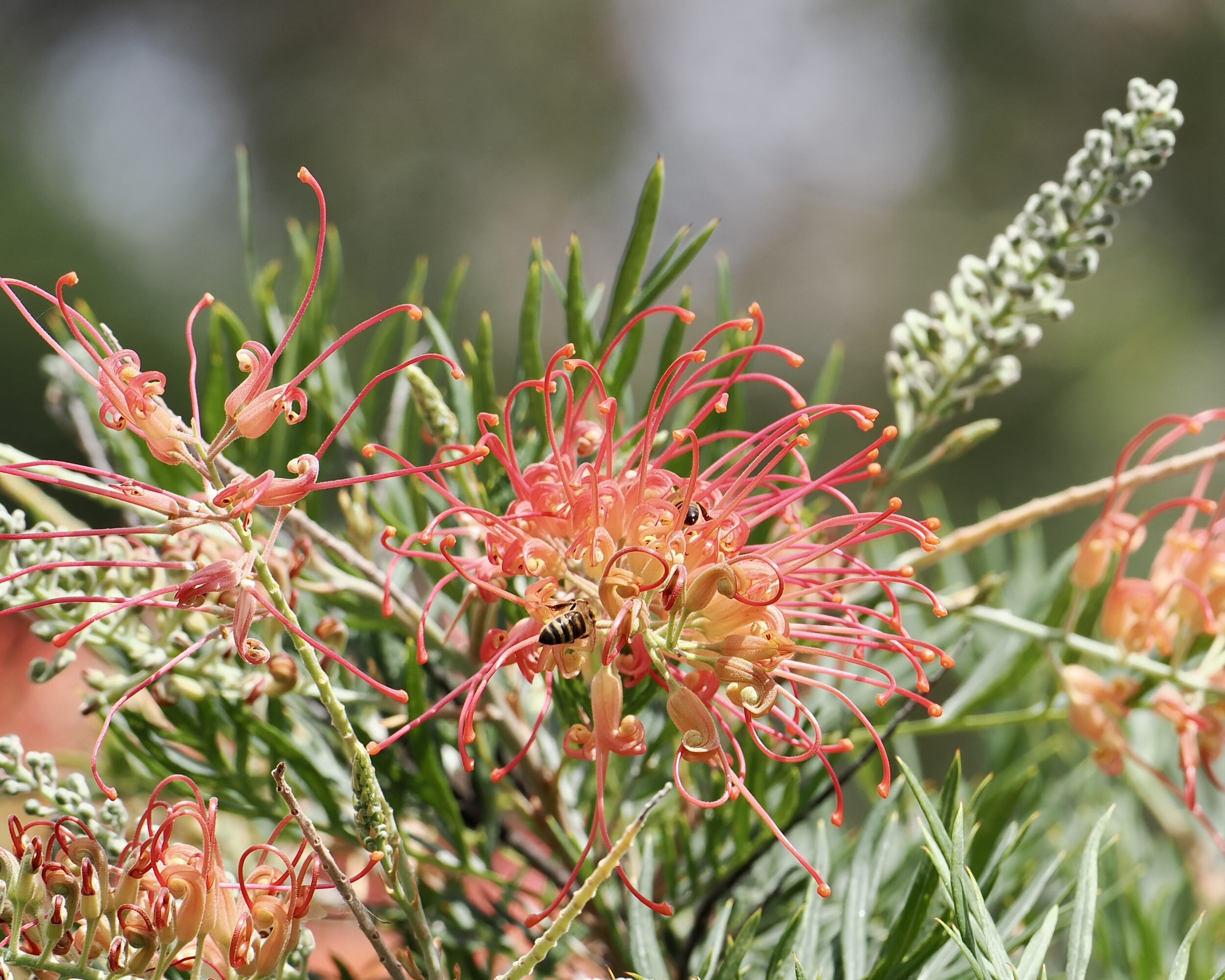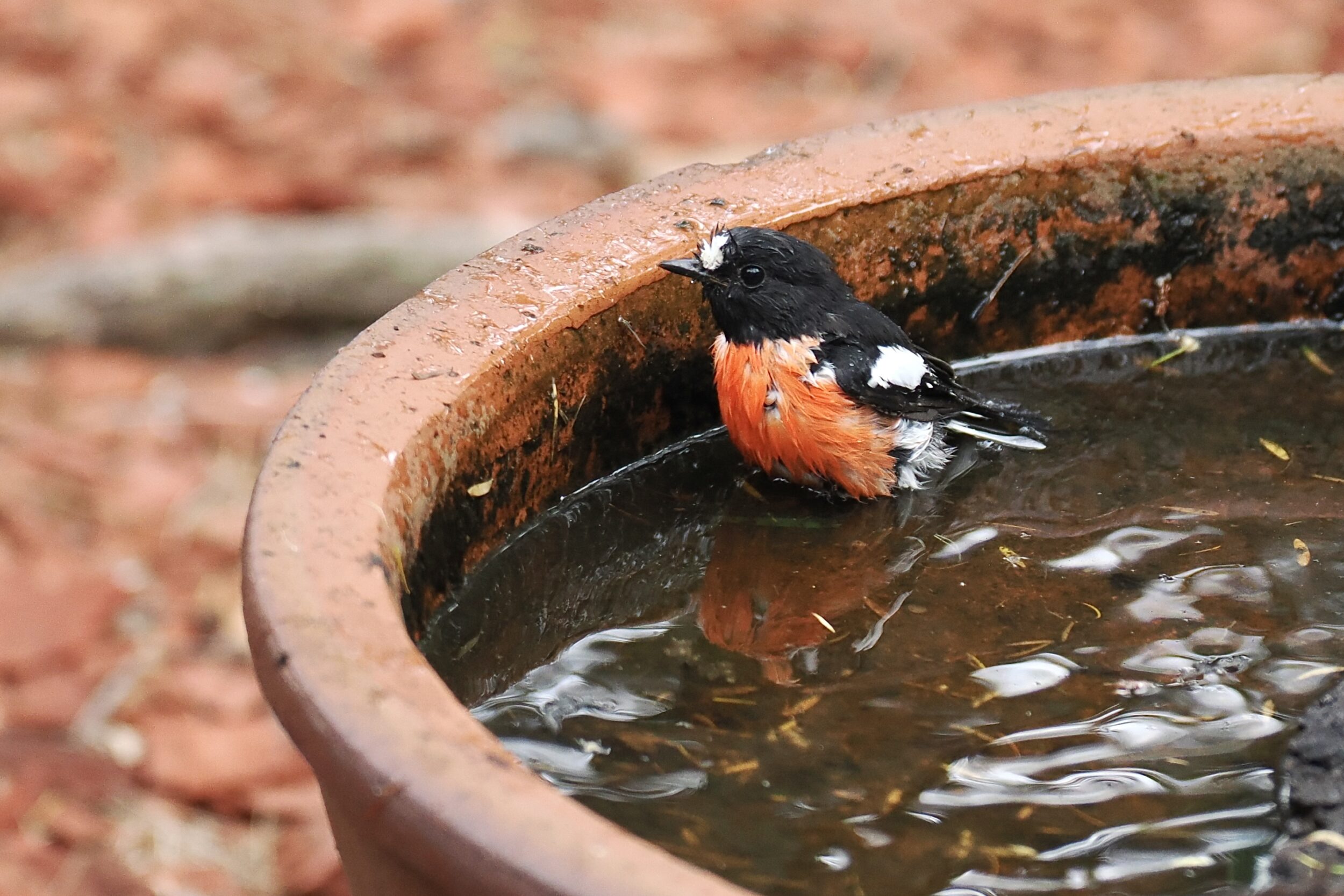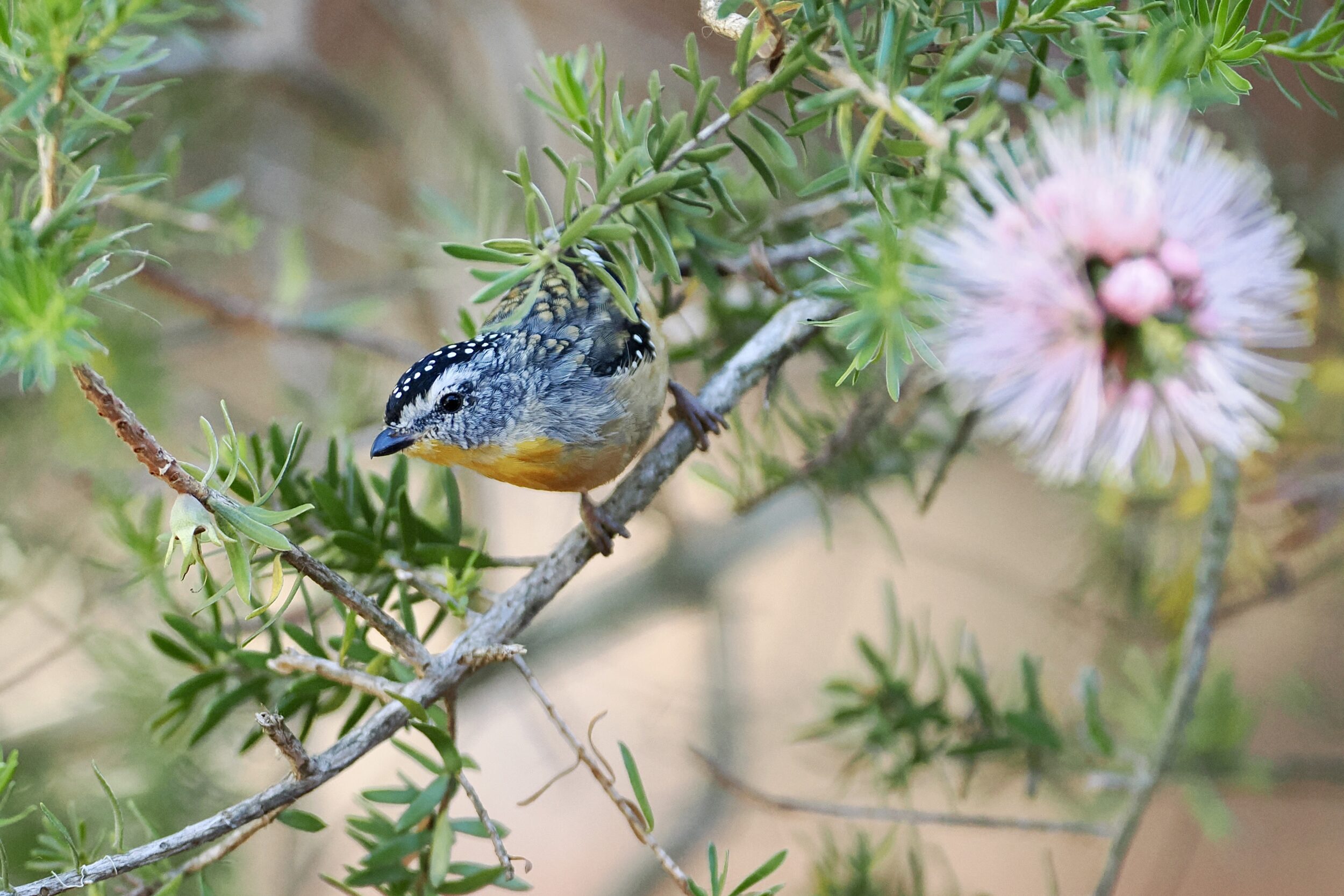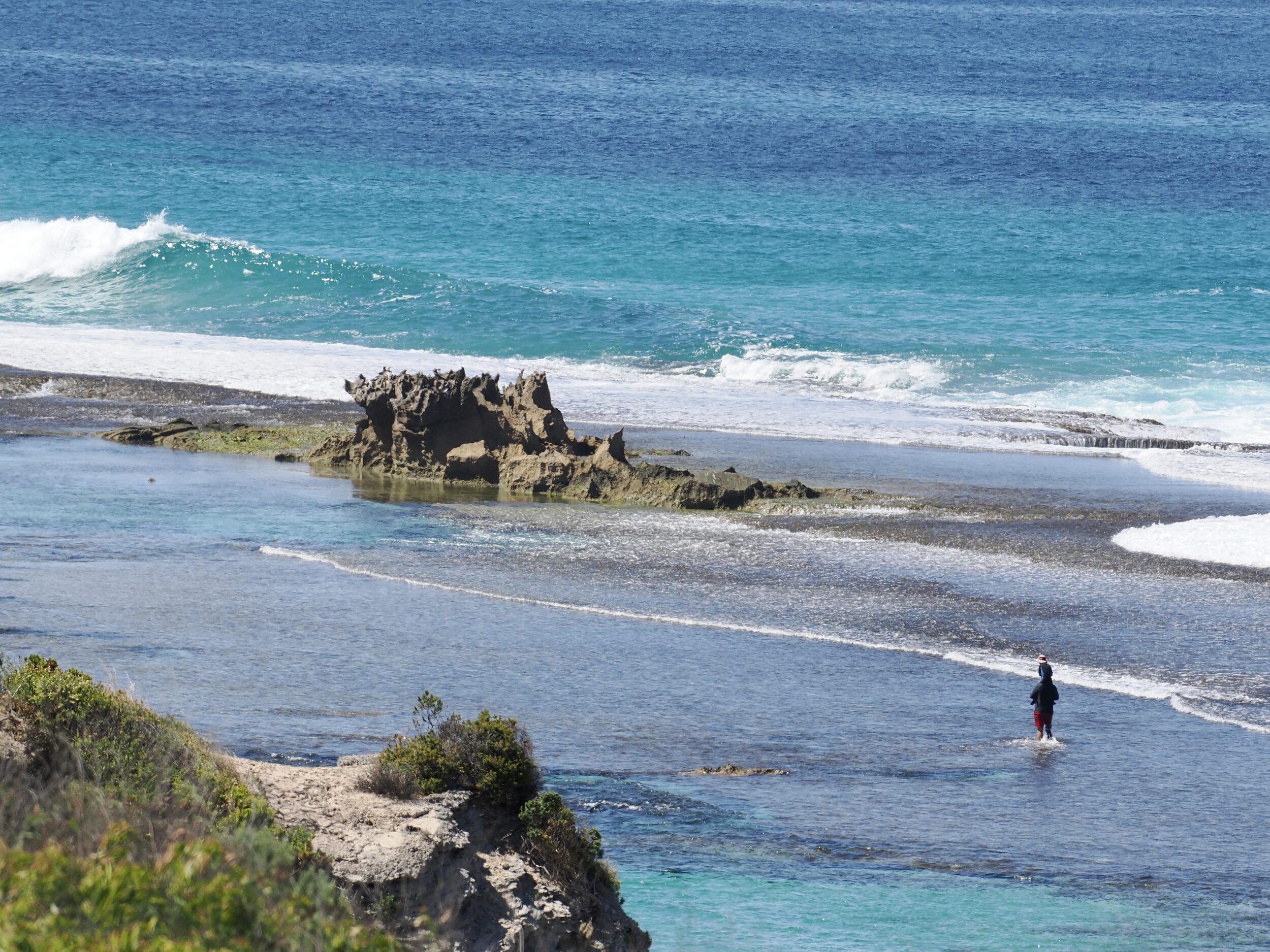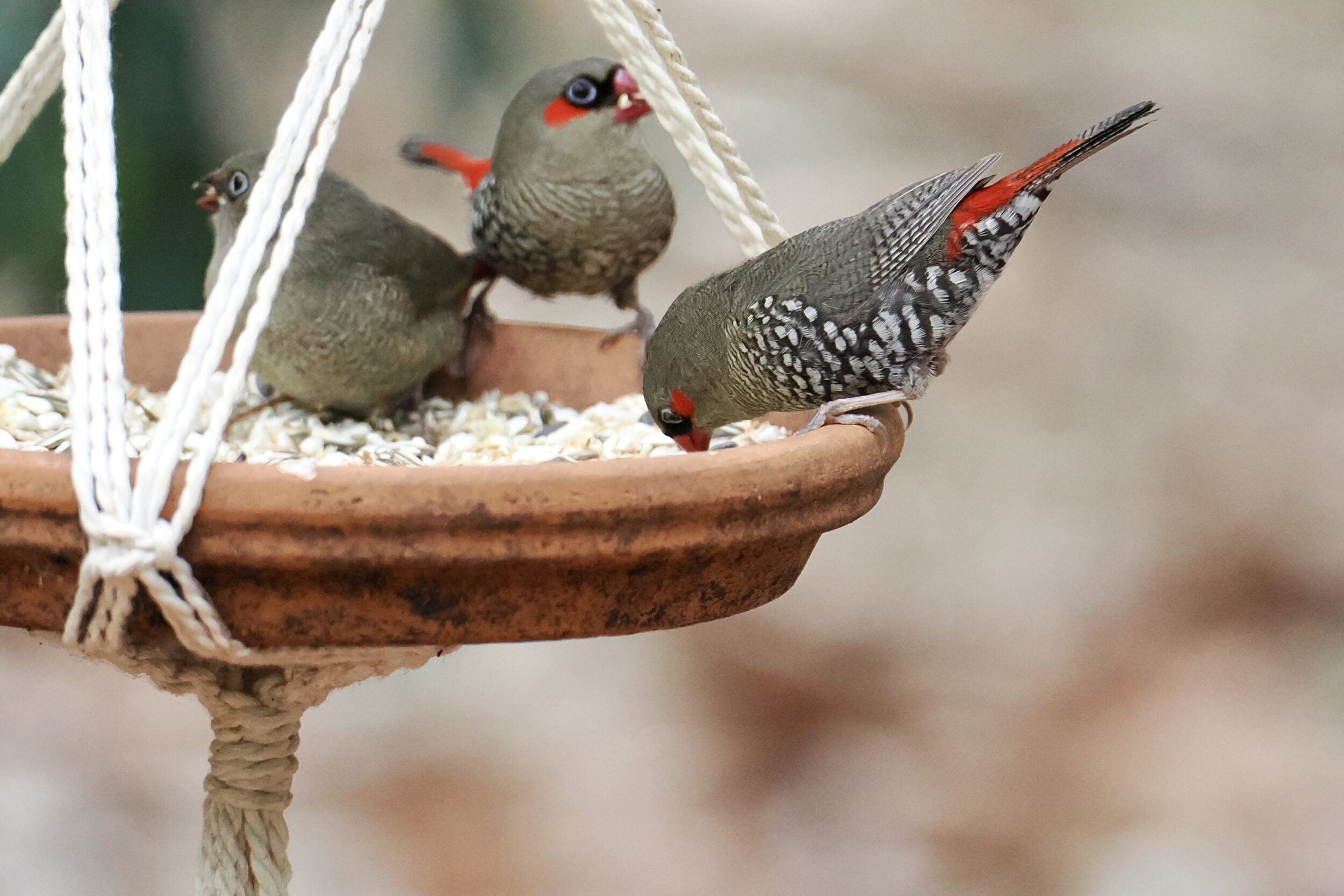Two descriptions of the pictured, “secretive” species:
Red-eared firetails are usually only glimpsed briefly, if at all, as they move rapidly and discreetly through their habitat. (Wikipedia)
It is a solitary species and is generally found in the most retired spots in the thickets, where its mournful, slowly drawn-out note only serves to add to the loneliness of the place. Its powers of flight, although sometimes rapid, would seem to be feeble, as they are merely employed to remove it from tree to tree. The natives of the mountain districts of Western Australia have a tradition that the first bird of this species speared a dog and drank its blood, and thus obtained its red bill. (John Gilbert, as cited in John Gould’s Handbook, published in 1865)

